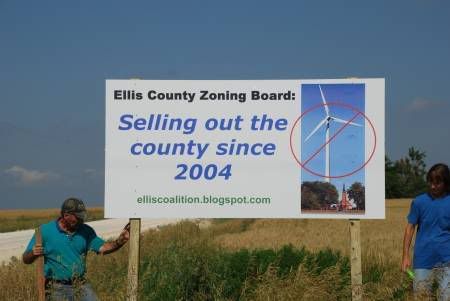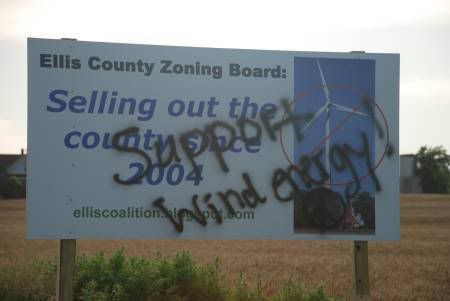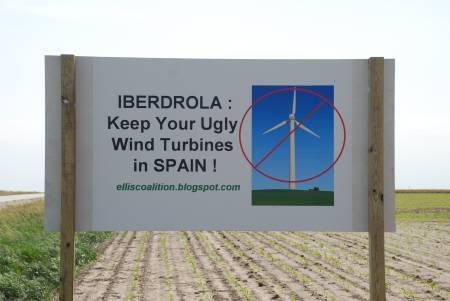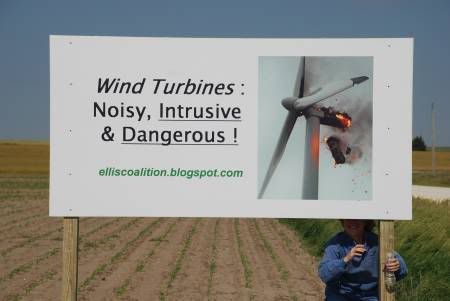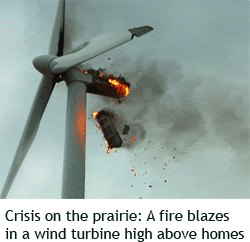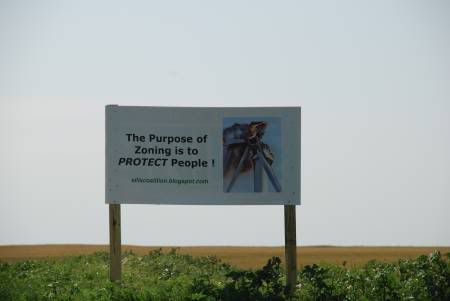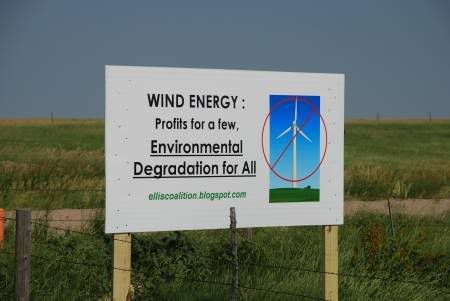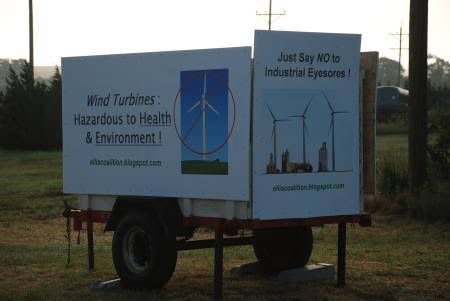Wind farm is all about the money
The following letter by J.P. Michaud, Ellis County resident, was printed in the Hays Daily News, on June 29, 2007:
Opponents of the wind project have recently been subjected to a series of scathing public allegations from Dana Kraus, whose hope was to retire with the money from his windmills because, “I don’t have a 401(k).”
I publicly challenge Dana to accompany me to the 400-foot met tower on Palmer land with a notary public and measure its shadow so we can triangulate its height. If it is not in excess of 300 feet, I will pay him $1,000 in cash which he can use to start a retirement plan.
To my knowledge, there have been no unlawful actions reported against project proponents. Public shaming with signs, print and the Internet to be sure, but nothing illegal and all based on facts that are matters of common knowledge and public record. Otherwise, I am sure we would all be facing lawsuits by now. In contrast, opponents have had our signs defaced, suffered several costly acts of vandalism on oil leases, and one suspicious fire in a business immediately following a petition drive there. We also have received anonymous threats and “poison pen” letters — we have simply not sought to portray ourselves as victims in the media to the extent that proponents have.
I venture that if the project’s supporters fear harassment, it is fear borne out of guilt for their own selfish greed.
We have heard proponents speak vehemently about the social benefits of wind energy and how we should embrace it to save the planet. It is cleaner electricity than that produced by burning coal. It will help reduce global warming. It will bring economic development to the community. It is the socially responsible course of action. For these reasons, they have established the Ellis County Supporters of Wind to “educate” the community.
So why was this group not formed at the project’s inception? They would have had three years to “educate” us. But regardless of whether one believes these claims, it is hard to accept them as motivation for the project.
The real motive is profit — both corporate and personal. Is anyone naive enough to believe that Disgen/CPV/Iberdrola would push this project simply to benefit our community?
After the demise of Enron, its subsidiary Enron Wind was acquired by General Electric and quickly set the tone for aggressive wind energy development in the USA. Around this time, Disgen began as “single-asset” LLC corporation. The single asset? A pile of leases and easements covertly obtained by Krista Gordon entitling them to conditional land uses. Notably, this single asset will soon be rendered worthless if their application is denied. No wonder Krista is scrambling.
Why would Iberdrola pay $67 million for a collection of land use entitlements? As Kristen Sullivan put it to me, they have the “tax appetite” for this kind of project. They have the large capital expenditures necessary to fully exploit all the federal tax breaks in ways that smaller corporations cannot, tax breaks totaling about $160 million.
Envision your tax dollars going down a pipeline directly to Spain. Iberdrola is also responsible for massive carbon emissions worldwide and is therefore highly motivated to obtain carbon credits however possible, the most attractive being obtained from government-subsidized wind energy developments. You have to be a big international player to trade carbon credits on the world stage and we are poised to become another poker chip in their stack.
Of the 15 or so people who have attended the first few supporters’ meetings, virtually all have a family or corporate interest in the project. I suspect we could learn more from them if they educated us on how to manipulate local politics for personal gain. The local profits go to seven families, and 58 percent go to Dana Kraus’s family (details here in the post “Corruption in Zoning”), while 100 families will have their quality of life destroyed and their properties devalued. Still, they publicly compare opponents to Nazis and expect us to believe that they are doing this for the good of the community and to help save the planet.
We know better. It is all about the money — these are people seeking financial gain with complete disregard for their neighbor’s health, investments and peace of mind.
Submitted by:
J.P. Michaud
1189 180th Ave.
Hays, Kansas
